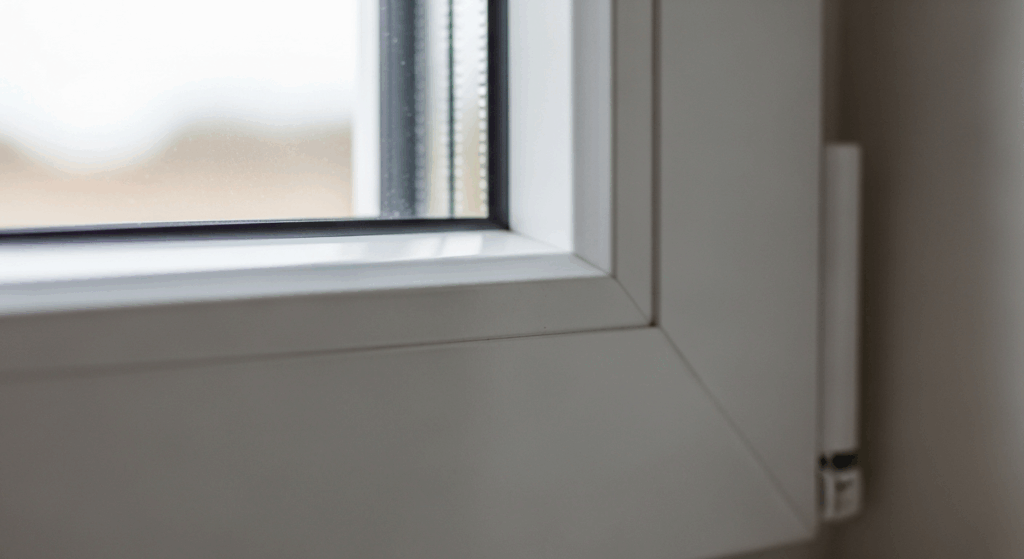UPVC stands for Unplasticized Polyvinyl Chloride – a rigid, durable form of PVC plastic that contains no added plasticizers. Unlike regular PVC, which is made flexible with chemical softeners, UPVC maintains its hard, inflexible structure throughout its lifetime.
UPVC is essentially PVC in its pure, unmodified state. When you produce PVC polymer from vinyl chloride monomers, you get a naturally rigid material. To make regular PVC flexible for products like cables or shower curtains, manufacturers add plasticizers (up to 30-40% by weight). UPVC skips this step entirely.
This absence of plasticizers makes UPVC completely different from flexible PVC. It won’t bend, it maintains its shape under normal conditions, and it doesn’t have the chemical migration issues that flexible PVC products face over time.

Chemical and Mechanical Properties of UPVC
| Property | Value/Description |
|---|---|
| Chemical Composition | Long chains of vinyl chloride units (CH₂=CH-Cl) with ~57% chlorine content by mass |
| Density | 1.38-1.42 g/cm³ |
| Tensile Strength | 40-51 MPa |
| Flexural Modulus | ~3.0 GPa |
| Heat Deflection Temperature | 65-70°C under load |
| Service Temperature Range | 0°C to 60°C (becomes brittle below 0°C without modifiers) |
| Elongation at Break | <15% for standard rigid PVC |
| Thermal Conductivity | Very low (excellent insulator) |
| Fire Resistance | Self-extinguishing, LOI ~45% |
| Chemical Resistance | Excellent against acids, bases, salts, and water |
| UV Resistance | Good with proper stabilizers (TiO₂) |
| Water Absorption | <0.5% |
Advantages of UPVC
- Exceptional Durability: UPVC products last 25-50+ years with proper formulation. They won’t rust, rot, or corrode even in harsh weather conditions.
- Zero Maintenance Required: Unlike wood or metal, UPVC never needs painting or anti-corrosion treatments. Simple cleaning with soap and water keeps it looking new for decades.
- Superior Insulation: The material’s low thermal conductivity makes it excellent for energy-efficient windows and doors, helping reduce heating and cooling costs.
- Chemical Resistance: UPVC handles aggressive chemicals, sewage, and saltwater without degrading, making it ideal for pipes and coastal applications.
- Cost-Effective: Lower initial cost than aluminum or wood alternatives, plus virtually zero maintenance expenses over its lifetime.
- 100% Recyclable: Can be recycled 5-7 times without significant quality loss, contributing to circular economy goals.
- Weather Resistant: Withstands moisture, UV radiation (with stabilizers), temperature extremes, and doesn’t warp or swell.
Applications of UPVC
- Windows and Doors: The most common application – UPVC window frames and door frames dominate residential construction due to energy efficiency and low maintenance.
- Pipes and Plumbing: Water supply lines, sewage pipes, drainage systems, and irrigation pipes. UPVC pipes can last 50-100 years underground.
- Building Materials: Siding, cladding, fascia boards, soffits, gutters, and downspouts for exterior building protection.
- Electrical Conduits: Rigid conduit pipes for protecting electrical wiring, especially in outdoor installations where UV resistance is crucial.
- Industrial Equipment: Chemical processing equipment, ventilation ducts for corrosive fumes, tanks linings, and valves for water treatment.
- Conservatories: Complete conservatory structures using UPVC framing members for weather-resistant sunrooms.
- Medical Applications: Some medical devices and dental retainers utilize UPVC’s biocompatibility and rigidity.

What Is the Difference Between uPVC and PVC
The key difference is flexibility: PVC contains plasticizers that make it soft and bendable, while UPVC contains zero plasticizers and remains rigid.
Regular PVC can contain 30-40% plasticizers by weight, typically phthalates, which allow the material to flex. These additives can migrate out over time, causing the material to become brittle. UPVC avoids this entirely by using the polymer in its natural, unmodified state.
Comparison with Alternative Materials
| Material | Thermal Insulation | Durability | Maintenance | Initial Cost | Best For |
|---|---|---|---|---|---|
| UPVC | Excellent | 25-35 years | Minimal (cleaning only) | Low | Energy efficiency, low maintenance |
| Regular PVC | Good | 10-20 years | Moderate | Very Low | Flexible applications only |
| Aluminum | Poor (without thermal break) | 30-45 years | Low | High | High-strength, slim profiles |
| Wood | Very Good | 30-50+ years (with maintenance) | High (regular painting) | Medium-High | Traditional aesthetics, historic buildings |
FAQs
Can UPVC be painted?
While technically possible with special primers and paints, UPVC is not designed to be painted and the paint may not adhere well long-term.
Is UPVC safe for drinking water?
Yes, UPVC is approved for potable water systems in most countries. It doesn’t leach harmful chemicals when properly formulated with safe stabilizers.